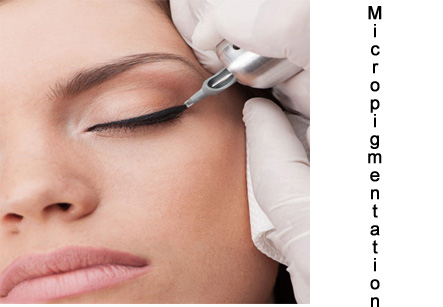Micropigmentation
Introduction
Micropigmentation, also known as “permanent make-up”- is a technique in which minute, metabolically inert pigment granules are implanted below the epidermis of the skin for cosmetic and/or corrective enhancement. This ancient Asian beautification exercised has gained recognition across the globe. This procedure is used to improve conditions like scarring and vitiligo (uneven pigmentation); to enhance facial attributes like eyebrows, lashes and lips; or to reconstruct the nipple/areola breast area.
Surgical Procedure
Micro pigmentation is done in an office setting. Two sittings are generally required and these are four to six weeks, nevertheless the health profile, patient’s age and the procedure conducted is also taken into consideration. The procedure will be performed with a pen-like instrument or standard tattoo gun. Needles penetrate the skin a few millimeters, just as done in a tattooing process. The doctor or specialist should wear medical gloves when performing the procedure. The procedure is not time consuming, perhaps 20 minutes to half an hour at the most is required. If a patient requires anaesthesia, some more time is needed in order to let the anaesthesia take effect. An antiseptic is provided by the cosmetologist to the patient to clean the treated area post- procedure.
Micropigmentation is a highly specialised process during which tiny deposits of pigment are positioned within the dermal layer of the skin

Inclusion criteria for micro pigmentation:
Micro pigmentation may be a viable solution for them and can help them enhance certain features.
People having aesthetic or physical limitations may opt for micro pigmentation. However, anyone can get it done just to improve his/her looks. It can be done to enhance the appearance of thin eyebrows. It can improve the look of small lips. Uneven hairline can be corrected with this procedure. It has been a boon to people who develop allergies to make-up. Micro pigmentation may be a viable solution for them and can help them enhance certain features.
Benefits:
• No downtime involved, most of the patients can resume their daily normal activities within a day.
• Color additives used by many pigment makers are approved by FDA’s Food, Drug, and Cosmetic listings; though FDA still does not approve the final product – the pigment used for tattooing.
• This procedure is not at all time consuming. It might take two hours at the most, although not all that time is consumed in tattooing; a few administrative and pre-procedure preparation tasks are associated with this procedure.
• Within 24 hours, the skin becomes normal. A mild level of swelling or redness is observed.
• Topical and/local anesthesia can be given to avoid mild discomfort during procedure.
• Although this procedure is designed to enhance features and not to substitute make-up altogether, it can be a good option for women with make-up allergies.
• Color pigments are individually mixed for customized results, and designed to look natural. Though results can be seen instantly, it might take about 20 days for complete end results to appear.
Other Considerations:
• Since it is a permanent procedure, laser surgery will be required to remove pigment.
• Needles inserted too deeply in the skin may cause bleeding, spreading of pigments, and damage to hair follicles.
• Direct sunlight should be avoided by the patients. They should refrain from applying make-up, and wearing contact lenses for a few days, and avoid swimming for a few weeks.
• A very few patients may experience allergic reaction or infection post- procedure.
• Scarring is possible due to practitioner error.
• These pigments may cause interference with cranial MRI scans.
Post- procedural care:
1. Patients are discharged the same day of the procedure done.
2. Swelling may appear in the area treated with pigments.
3. Cosmetologist will instruct the patient for ice pack application on the area treated and also about ointment to be applied.
4. One should not drive home back, if being treated in the eye region. Tearing may be normally experienced.
5. The pigmentation typically will appear darker in initial weeks following the procedure, but will fade over the period of time.
Doctor is to be contacted immediately if:
• excessive swelling develops
• The area feels excessively hot or burns
• fever or rash is developed
Follow-up:
• This procedure demands proper maintenance
• A few patients might require two or more sittings